(Scroll down for more pictures)
EBRPD
DEL VALLE RESERVOIR
May 14, 2018
Home
|
Hike Description: We are always searching for new places to go, mostly on the web. Some obscure reference led us to Del Valle, located about six miles southeast of Livermore. We often have reservations about reservoirs, but in this case it seemed interesting and had gotten nice reviews. The drive there and back would take up a good part of the day, but luckily it had a nice campground, which made for a perfect overnight trip. One big surprise was downtown Livermore. The common conception is a dull bedroom community's center. It may have been that years ago, but now has been made over to more resemble a quaint European town. The ride along Mines Road was an interesting mixture of Old California ranch with south of the border influences thrown in, some leaning more to Tijuana than Acapulco.
Blooming Plants Not Photographed:
|
| Matillija Poppy (Romneya coulteri) |
| A native of Southern California, this striking
bush is quite aggressive when established. It was planted by EBRPD personnel. (Scroll down for more pictures) |
Some pictures can be enlarged
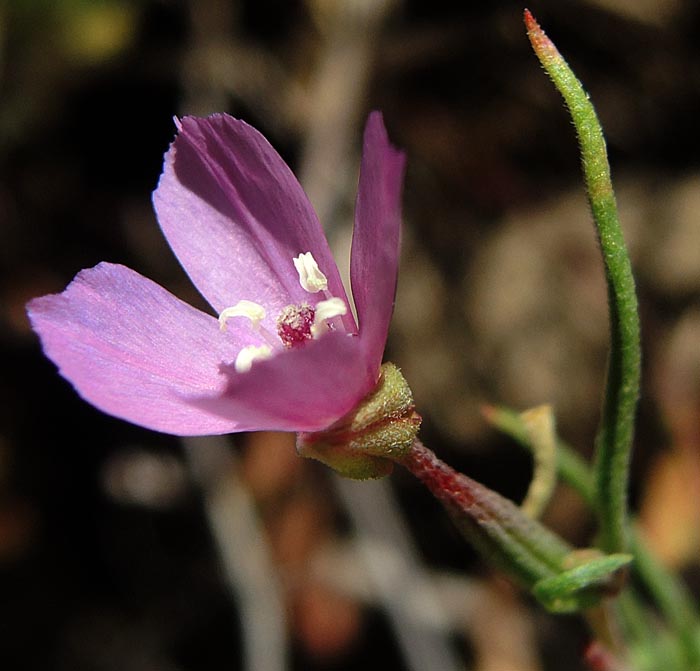 |
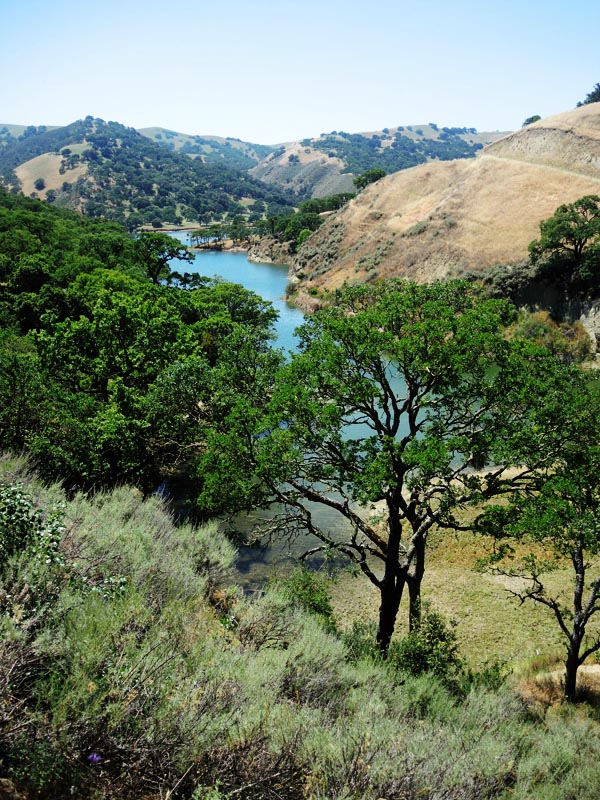 |
|
| Small Clarkia (Clarkia affinis) | ||
| An aptly named native as it was only about 1/2"across. | View of the reservoir's Badger Cove from the Swallow Bay Trail. |
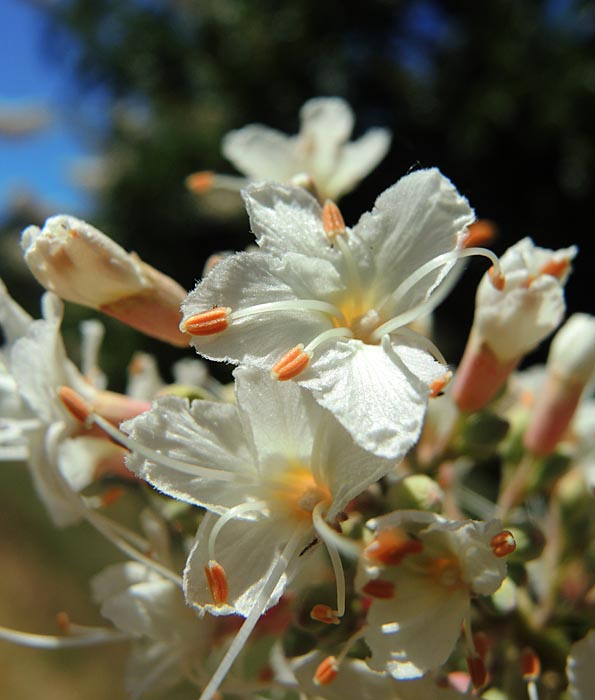 |
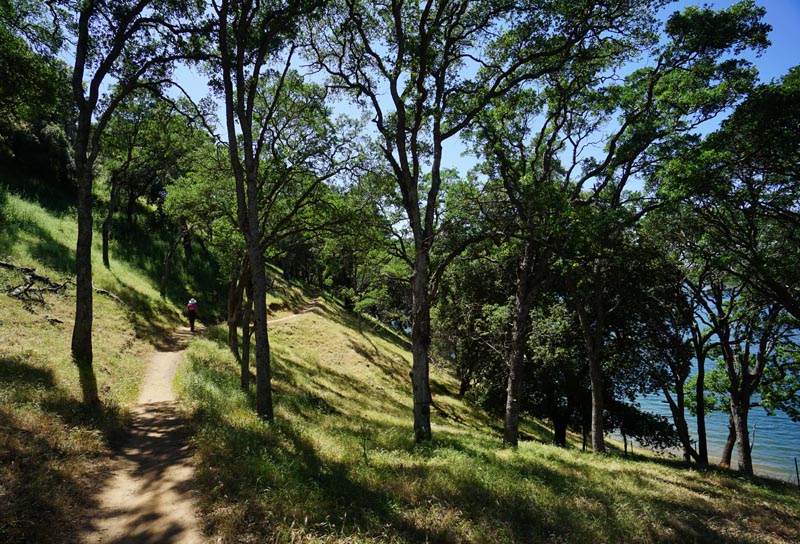 |
|
| A close up of our showy native Buckeye Tree (Aesculus californica) flower. | The hilly section of the East Shoreline Trail as it heads back south. |
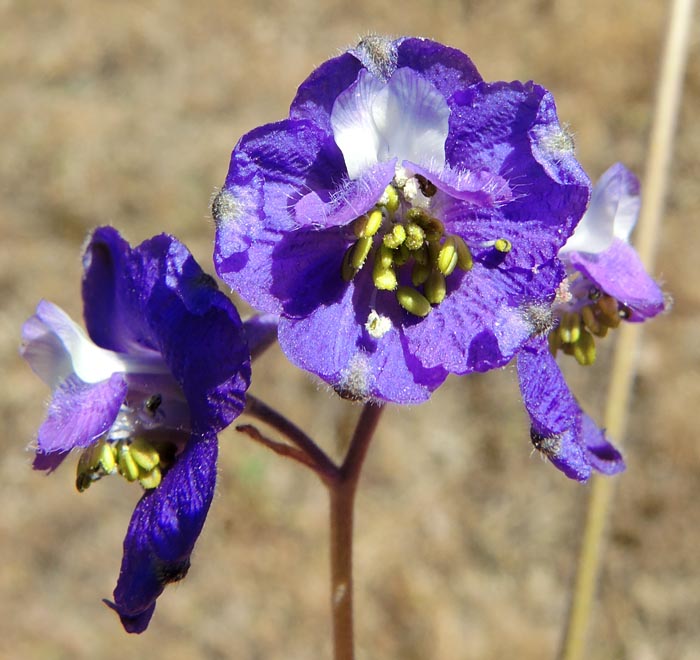 |
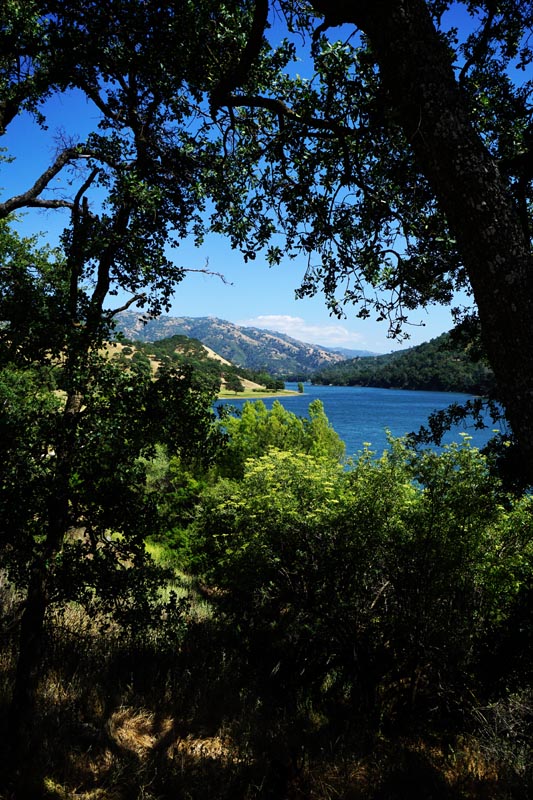 |
|
| Royal Larkspur (Delphinium variegatum) | ||
| Herbalists maintain certain Delphiniums can kill lice, treat asthma & help control nervous system disorders. Native. | View of the reservoir through the trees. |